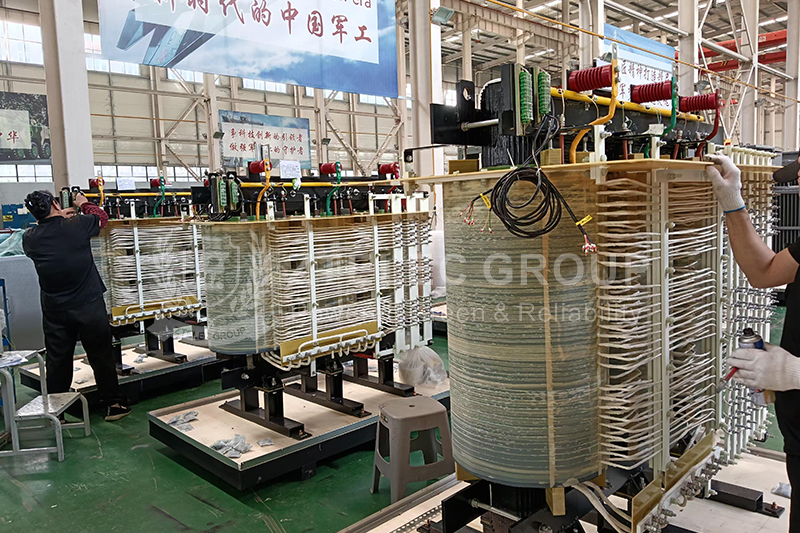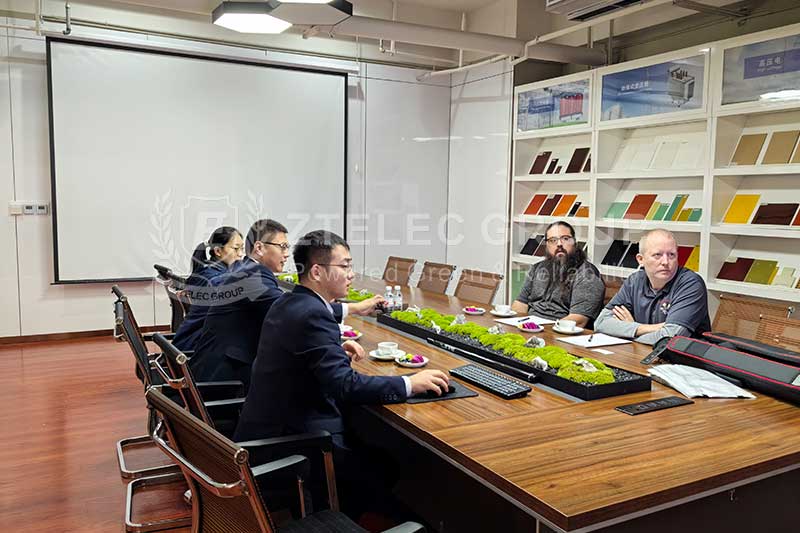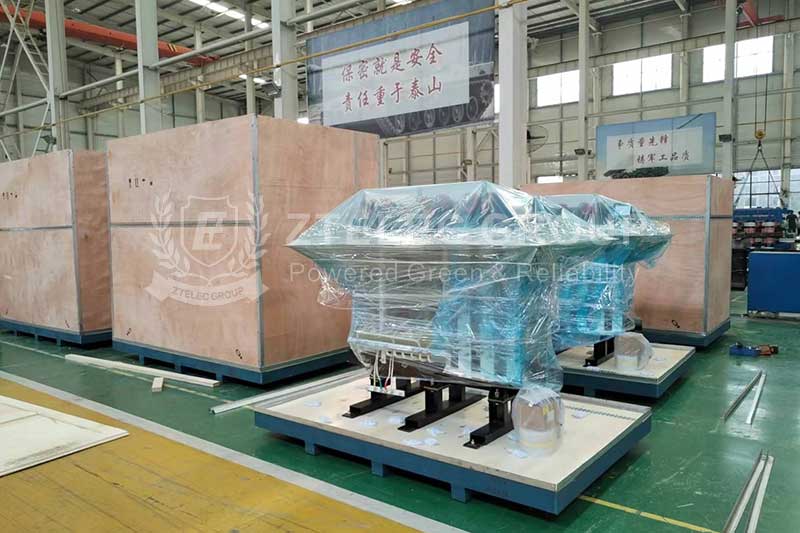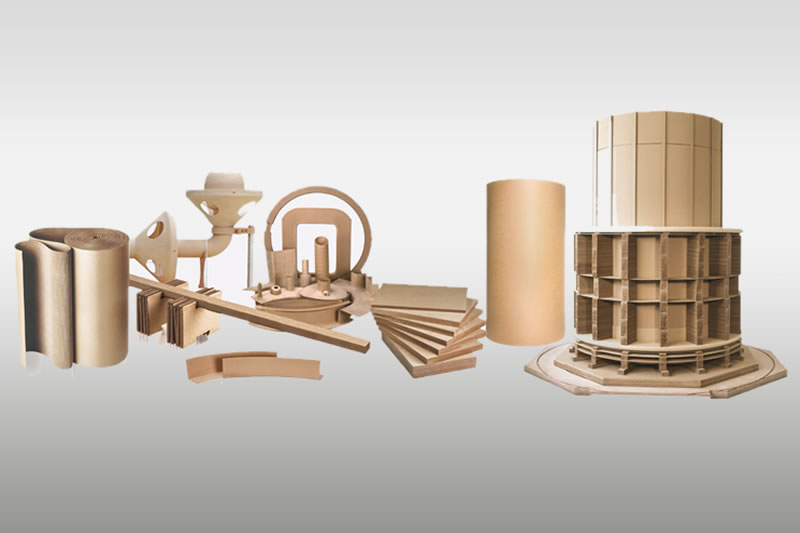Step-by-Step Guide: Manufacturing Laminated Wood for Transformers
Laminated wood, a composite material made by pressing wood with adhesives, holds significant importance in the transformer industry due to its unique advantages. Its internal gases and moisture are easily removable, and its high oil absorption allows thorough impregnation. Additionally, it offers excellent machinability and cost-effectiveness. In transformer manufacturing, engineers primarily use laminated wood to produce insulating components such as end rings, pressure plates, and clamping blocks, which significantly enhance the transformer's insulation performance and structural stability.
Laminated Wood Features
Electrical Performance: The dielectric constant of laminated wood closely matches that of transformer oil, and the two exhibit excellent compatibility, making it an ideal material for manufacturing transformer insulation components.
Mechanical Performance: Laminated wood possesses high mechanical strength, effectively withstanding various mechanical stresses during transformer operation, ensuring stable performance.
Material Selection and Pretreatment of Laminated Wood
1. Base Material Selection
Engineers must strictly control the quality of the base material, as it directly affects the performance of the laminated wood. High-quality wood with dense fiber structure and high mechanical strength (e.g., birch) should be selected. The chosen wood must be uniform, free from defects such as insect damage or cracks, and exhibit long-term compatibility with transformer oil and other media. It should also possess good heat resistance and stability to meet transformer requirements.
2. Wood Pretreatment
Boiling Treatment: High-temperature boiling effectively removes impurities such as sugars and resins from the wood, preventing bubble formation or cracking in subsequent processes, laying a solid foundation for further processing.
Peeling and Drying: The boiled wood is peeled into thin veneers and then dried in a controlled-temperature environment to achieve a standardized moisture content (typically 6%-12%). This ensures dimensional stability and prevents deformation caused by moisture issues.
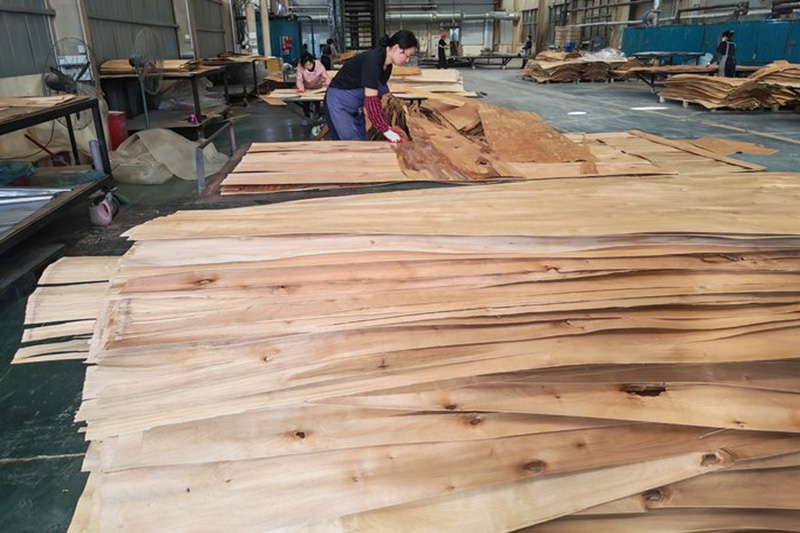
Laminated Wood Impregnation Process
1. Resin Selection
Technicians typically use phenolic resin with excellent heat resistance and insulation properties as the impregnating agent. This resin ensures stable performance under long-term high-temperature conditions, providing reliable insulation and thermal resistance for the laminated wood.
2. Impregnation and Drying
Multi-Stage Impregnation: The veneers undergo multiple resin impregnation treatments to ensure thorough filling of wood pores, significantly enhancing insulation performance and meeting electrical standards.
Drying Process: The impregnated veneers are dried at low temperatures to remove surface moisture. Residual moisture can lead to defects such as bubbles and delamination during hot pressing, affecting product quality.

Laminated Wood Layup and Hot Pressing Curing
1. Layup Method
Cross-Grain Arrangement: Veneers are stacked in a crisscross or cross-ply pattern to enhance interlayer bonding, reduce material anisotropy, and improve overall performance.
Composite Reinforcement: Modified fiberglass cloth or insulating paper is inserted between veneers to further enhance voltage breakdown resistance and mechanical strength, meeting stringent insulation and mechanical requirements for transformers.
2. Hot Pressing Process
Pre-Pressing: The assembled layers undergo pre-pressing to remove excess air and resin, ensuring tight interlayer contact and creating optimal conditions for subsequent hot pressing.
Hot Press Curing: High-temperature and high-pressure conditions are applied to fully cure the resin, forming a robust and stable laminated structure. Parameters such as temperature, pressure, and duration must be optimized based on material properties.
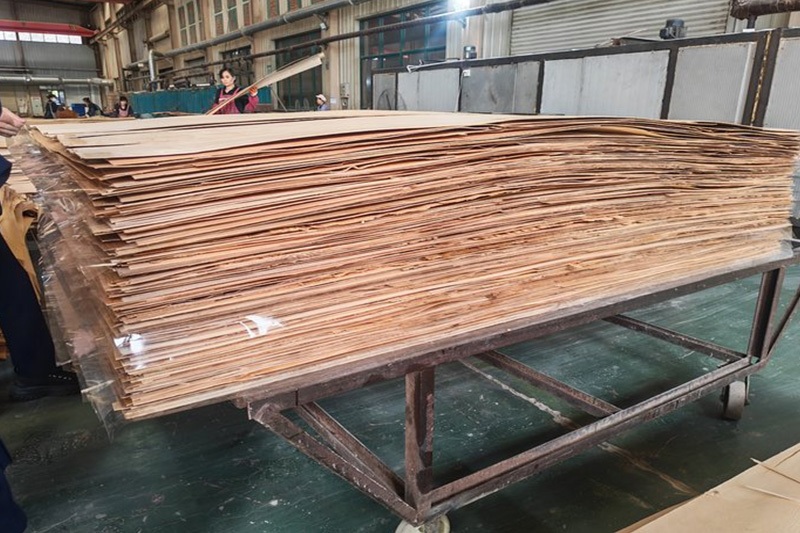
Post-Processing and Inspection of Laminated Wood
1. Cutting and Drilling
Workers perform precision cutting and drilling according to design specifications, ensuring dimensional accuracy to meet electrical equipment assembly requirements and guarantee transformer stability.
2. Surface Treatment
Grinding and Polishing: The processed laminated wood is ground and polished to remove burrs and improve surface smoothness, reducing partial discharge risks and ensuring electrical safety.
Insulating Film Lamination: An insulating film is thermally pressed onto the surface to enhance moisture resistance and insulation performance, making the material better suited for transformer operating conditions.
3. Quality Inspection
Visual Inspection: Quality inspectors examine the surface for defects such as cracks, bubbles, or delamination to ensure product integrity.
Insulation Resistance: Under DC 500V, insulation resistance must meet the standard of ≥10¹²Ω to comply with high-voltage equipment requirements.
Mechanical Strength: Bending strength and impact toughness must meet design specifications to withstand mechanical stresses during transformer operation.
Heat Resistance: The laminated wood must remain stable without deformation or performance degradation under prolonged high-temperature conditions (e.g., 120°C).
4. Packaging and Storage
Qualified products are packaged in a dry environment to prevent moisture absorption, ensuring quality and safety during storage and transportation.
- more+releated article
- 2025-12-13How to Select and Use Phenolic Cloth-base Lami
- 2025-12-13How Much Does Bakelite Sheet Cost? 2025 Price
- 2025-12-13Why are most 3240 epoxy boards yellow?
- 2025-12-13What are the Main Applications of FR4 Epoxy Bo
- 2025-12-13Why Does the Price of Insulating Paperboard Va
- 2025-12-13Heat-Resistant DDP Insulation Paper
- 2025-12-13Comparison of Heat-Resistant DDP Insulating Pa
- 2025-12-13G10 and FR4 Epoxy Boards: Commonly Used for Ge
- 2025-12-13The Price of Heat-Resistant DDP Insulation Pap
- 2025-12-13How to Choose Epoxy Laminate Materials for Gen

